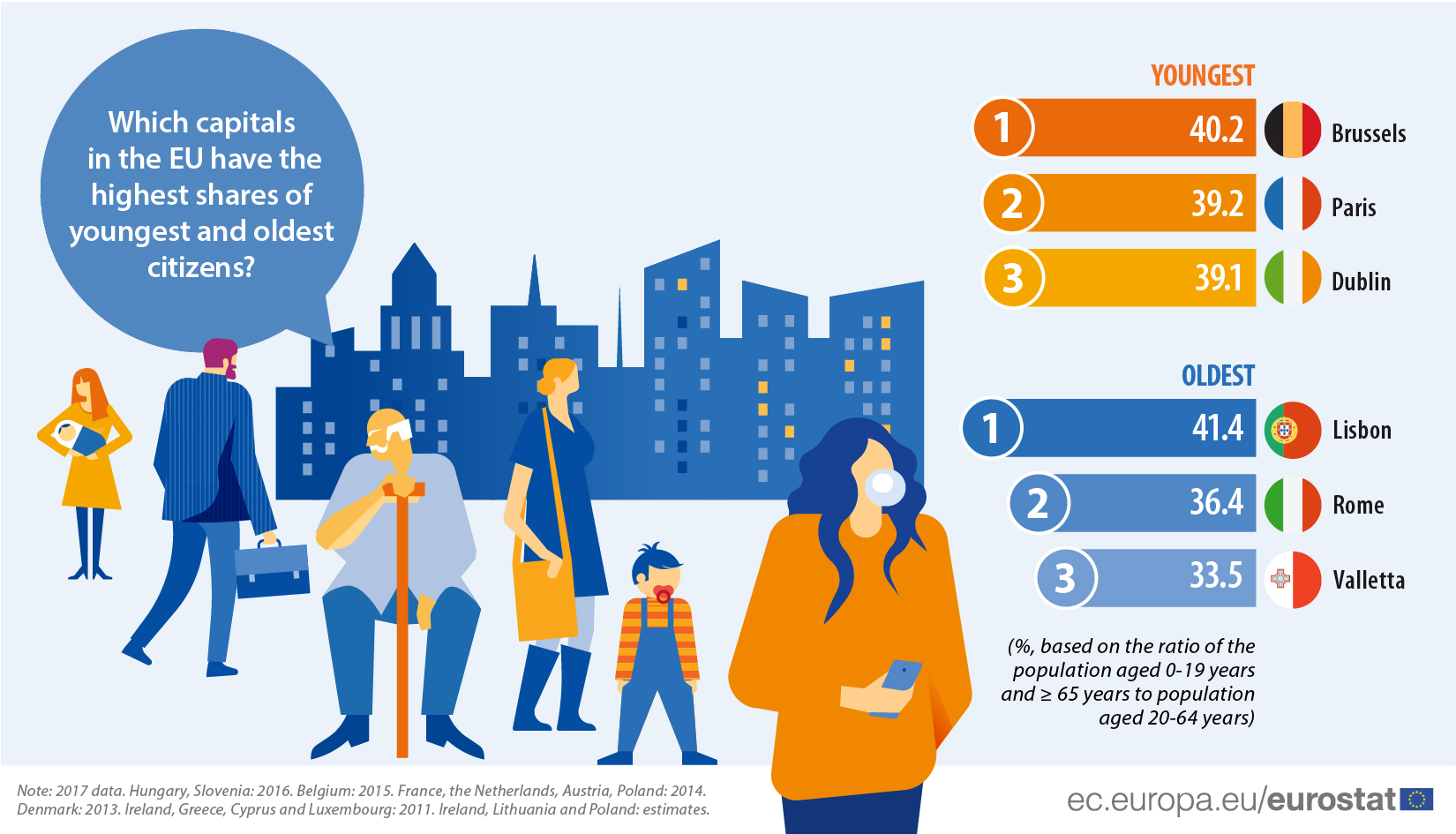In the European Union (EU), the young-age dependency ratio stood at 35% in 2017. In other words, there was on average one young person (aged 19 or less) for three people of working age. The old-age dependency ratio was a little lower (33%), representing the ratio of the number of elderly people (aged 65 and over) compared to the number of people of working age.
At city level, Brussels is the youngest capital city in the EU with a young-age dependency ratio of over 40%, closely followed by Paris and Dublin (39%). In contrast, Lisbon, with an old-age-dependency ratio of over 41%, is the capital city with oldest citizens, ahead of Rome (36%) and Valletta (34%).
On the occasion of World Cities Day, we take a look at the demographic diversity in cities of the EU.
Youngest cities are in France and the United Kingdom
Young-age dependency ratios were highest in a large number of cities in France and the United Kingdom. The Communauté d’agglomération Val de France, near Paris (France), recorded the highest ratio (58%, 2014 data).
Germany and Romania – many cities with low shares of young people
The young-age dependency ratio in cities was below the EU average (35%) in Germany, Cyprus (2011 data), Lithuania, Luxembourg (2011 data), Malta, Austria, Poland (2014 data), Romania, Slovenia (2016 data) and Slovakia. Around two thirds of the 19 cities with the lowest ratios (below 25%) were in Romania or Germany.
The source dataset is accessible: here and here.
Oldest cities in Germany, France and Italy…
The highest old-age dependency ratio, with a ratio of at least one person aged 65+ per two working age adults, was recorded in the French coastal resort of Fréjus (64%; 2015 data), followed by seven other cities
- the coastal cities of Cannes (2014 data) in France, Savona, Genova and Trieste in Italy, and Waveney (which includes Lowestoft) in the United Kingdom;
- Dessau-Roßlau and Görlitz in eastern Germany.
In 2017, the majority of EU cities with an old-age dependency rate of 45% or more were located in Italy (12 cities), Germany (8 cities) and France (6 cities; 2014 or 2015 data).
Relatively few elderly people living in satellite cities around Madrid and Paris
In 2017, there were 57 cities across the EU with an old-age dependency ratio that was less than 20%. The lowest old-age dependency ratios were in two cities close to Madrid: Rivas-Vaciamadrid (10%) and Valdemoro (14%). There were several other cities with relatively low old-age dependency ratios around the Spanish capital and in a number of smaller cities around Paris.
Are you interested in further statistics on European cities? You can find it in the dedicated chapter of the Eurostat regional yearbook 2019. As well as detailing the size and age structure of the population of cities, this chapter focuses on two areas: living conditions and labour market.
For more information:
- Eurostat Regions and Cities dedicated page
- Eurostat regional yearbook 2019 and the corresponding maps in Statistical Atlas
To contact us, please visit our User Support page.
For press queries, please contact our Media Support.


